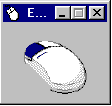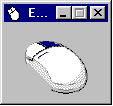|
Mouse emulation and related issues
|
||||||||||||||||||||||||||||||||||||||||||||||||||||||||
Emulation Modes
Most
pointer devices emulate the actions of the mouse; pen down, cursor movement,
pen up to generate left clicks, right clicks, double clicks etc. These actions have to be derived from the
events generated from the pointer device. In the case of a touch screen these
events are initial touch, movement, stationary touch and last touch -
effectively a complete touch sequence.
|
||||||||||||||||||||||||||||||||||||||||||||||||||||||||
|
Primary |
Secondary |
|
|
|
|
|
|
The Event Selector settings can be changed in the Event Selector menu. The
menu can be viewed by clicking on the title bar mouse icon on the desktop
Event Selector:
One hit: Indicates if the Event Selector automatically switches to the
Primary setting after a single secondary use.
Icon: Indicates the size of the mouse icon displayed in the desktop
event selector.
Text mode: Indicates that text be shown instead of a mouse icon.
The Event Selector can be moved to a different position via the application’s
title bar.
Toolbar Event Selector
The Event Selector function is implemented as a Toolbar Action. The Event
Selector toolbar can be created from the UPDD Extensions, Event Selector
dialog.
(A toolbar, called Event-Selector, is created with an
action of ‘UPDD Action’ and the Action being ‘Event Selector’.
Once the Event
Selector toolbar is created the Event Selector will be shown on the screen
and will toggle between the two event states when touched:
|
Primary |
Secondary |
|
|
|
The Event Selector extension also contains the Event Selector settings.
One Hit: indicates if the Event Selector automatically switches to the
Primary state after a single secondary use.
The Event Selector can be moved by touching the Event Selector image for a
short period of time and moving it to the desired position.
A Windows system tray ![]() ) is also offered to toggle between
primary and secondary event states and reflects the current setting.
) is also offered to toggle between
primary and secondary event states and reflects the current setting.

